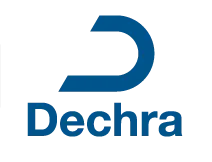Top 5 Procedural Sedation Facts

Sponsored by Dechra
Sedation can be a useful tool in general practice to decrease patient stress, improve diagnostic yield, and facilitate minor procedures. Despite its usefulness, some veterinary teams may be reluctant to sedate patients due to time, safety concerns, and/or lack of training. Read on to learn 5 key facts regarding procedural sedation and how procedural sedation and the novel drug from Dechra, Zenalpha® (medetomidine and vatinoxan hydrochlorides injection), can help improve patient comfort in general practice.
1. Sedation Differs from Anesthesia
Anesthesia is a drug-induced state in which there is depression of the nervous tissue.1 This state may be produced by use of a single drug or a combination of drugs. General anesthesia includes loss of both consciousness and sensation.1 A state of anesthesia also includes muscle relaxation, analgesia, amnesia, and suppressed response to noxious stimuli.1
With sedation, patients are in a state of CNS depression in which they are relaxed but can be aroused by noxious stimuli, which includes painful physical touch or loud noises.1 Sedation exists along a continuum based on a patient’s level of arousal, ability to maintain their airway, and ventilation.1
The choice of whether to place a patient under anesthesia or sedation depends on the type and length of procedure as well as individual patient and clinician factors. Regardless of whether a pet is placed under anesthesia or sedation, close monitoring by trained team members is essential. Monitoring guidelines are available through the American Animal Hospital Association (AAHA)2 and the American College of Veterinary Anesthesia and Analgesia.3 To decrease morbidity and mortality, maintenance of adequate circulation, oxygenation, ventilation, and body temperature should be prioritized and monitored closely.
2. Procedural Sedation Can Benefit Everyone
Sedation is becoming more common in practice, especially as low-stress handling and Fear Free® practices grow. Clients typically appreciate when veterinary clinics work to minimize their pet’s stress levels, and clinics may even improve client relationships by utilizing procedural sedation. Veterinary teams may also experience decreased risk for patient bites or scratches and can often perform procedures more efficiently, as fewer staff members are needed to perform the tasks.
Procedural sedation should be considered for:
Patients with fear, anxiety, and stress during physical examinations, nail trims, and diagnostic procedures such as blood draws, cystocentesis, and diagnostic imaging
Diagnostic imaging of all stable patients. Use of procedural sedation decreases staff radiation exposure and improves imaging positioning and quality.
Patients undergoing minor, minimally painful procedures such as a laceration repair, skin biopsy, or bandage change
Patients prior to euthanasia
3. Zenalpha® Is a Novel α2 Combination Drug Available for Procedural Sedation in Canine Patients
Zenalpha® (medetomidine and vatinoxan hydrochlorides injection) has 2 active ingredients: medetomidine (α2 adrenoceptor agonist) and vatinoxan (peripheral α2 adrenoceptor antagonist).4 It is indicated for dogs of American Society of Anesthesiologists (ASA) status 1 or 2 (clinically healthy patients).4 The drug is administered by intramuscular injection to dogs for sedation and analgesia.4 Zenalpha is for use in dogs only and not intended for use in cats.
Due to the unique combination of drugs, the product provides a more rapid onset of sedation, with shorter duration and fewer cardiovascular side effects as compared with α2 agonists traditionally used for sedation. Reported side effects include postsedation tachycardia, diarrhea, muscle tremors, and colitis.4 The drug can be reversed with atipamezole,5 but it is generally not needed due to the short duration of sedation.
4. Zenalpha Is Formulated to Create Fewer Cardiovascular Effects than Those Seen with Traditional α2 Adrenoceptor Agonists
Medetomidine, an α2 agonist, provides the sedative and analgesic effects of Zenalpha. Alpha-2 agonists are commonly used as sedative agents in clinical practice. They act centrally on α2 receptors to create sedation but can have marked cardiovascular side effects such as hypertension, bradycardia, and decreased cardiac output due to their effects on peripheral receptors.5
Vatinoxan is a selective peripheral α2 antagonist.4 It does not cross the blood–brain barrier, so it does not interfere with the CNS activity (sedation and analgesia) of medetomidine.4 Through selective binding to peripheral α2 adrenoreceptors, it blocks some of the medetomidine effects at vascular receptors, leading to fewer cardiovascular side effects.4
Do not use Zenalpha in dogs with cardiac disease, respiratory disorders, shock, severe debilitation, or hypoglycemia or are at risk for developing hypoglycemia or in dogs that are stressed due to extreme heat, cold, or fatigue. Zenalpha should not be administered in the presence of preexisting hypotension, hypoxia, or bradycardia.
In a clinical field study, the mean heart rate for patients receiving Zenalpha remained in the normal range (60-140 bpm), whereas those receiving dexmedetomidine (α2 adrenoceptor agonist) had a mean heart rate below normal for 15 to 180 minutes after administration.4 In patients receiving Zenalpha, the lowest heart rate observed occurred 15 minutes after drug administration. 4 An additional study demonstrated that cardiac output and blood pressure of patients receiving Zenalpha remained closer to normal as compared with patients receiving medetomidine alone.6
5. The Rapid Onset & Clearance of Zenalpha Can Decrease Time & Cost to the Practice & Client
As compared with a control group given dexmedetomidine, patients receiving Zenalpha had a shorter mean onset of sedation (14 minutes as compared with 18 minutes).4 The drug is distributed more quickly throughout the body as compared with other α2 agonists due to more normalized cardiovascular function.
Dogs should be monitored frequently during sedation for changes in heart rate, blood pressure, respiratory rate, and/or body temperature
In a clinical field study, canine patients receiving Zenalpha also had a shorter duration of sedation than the control group (≈45 minutes; mean, 38 minutes).4 Many patients will not require a reversal agent (atipamezole) needed with traditional α2 agonists. This saves clients money since fewer medications are needed. Rapid recovery also means patients can be discharged sooner, and procedural sedation can be performed later in the day, given the reduced down time.
Conclusion
Utilizing procedural sedation in the clinic can provide a variety of benefits to patients, pet owners, and team members alike. With Zenalpha being added as a novel drug for canine sedation, practitioners now have an option for fast-acting, lower-stress sedation that can be utilized in a variety of situations commonly arising in practice.
INDICATION
Zenalpha is indicated for use as a sedative and analgesic in dogs to facilitate clinical examination, clinical procedures, and minor surgical procedures. Zenalpha is not intended for use in cats.
IMPORTANT SAFETY INFORMATION
As with all drugs, side effects may occur. For use in dogs only. Not intended for use in cats. Not for use in humans. Avoid skin, eye or mucosal contact. In case of accidental oral intake or self-injection, seek medical advice immediately and show the package insert to the physician. DO NOT DRIVE as sedation, loss of consciousness, and changes in blood pressure may occur. People with cardiovascular disease and pregnant women should exercise special caution to avoid exposure. Uterine contractions and decreased fetal blood pressure may occur after accidental systemic exposure. Do not use Zenalpha in dogs with cardiac disease, respiratory disorders, shock, severe debilitation, that have hypoglycemia or are at risk of developing hypoglycemia, or are stressed due to extreme heat, cold or fatigue. Zenalpha should not be administered in the presence of pre-existing hypotension, hypoxia or bradycardia. Due to the pronounced cardiovascular effects of alpha2-adrenoceptor agonists, only clinically healthy dogs (American Society of Anesthesiologists [ASA] classes I and II) should be administered Zenalpha. Dogs should be monitored frequently during sedation for changes in heart rate, blood pressure, respiratory rate and body temperature. Tachycardia may occur in some dogs after recovery from sedation. The following adverse reactions have been reported: diarrhea, muscle tremors and colitis. Refer to the prescribing information for complete details or visit www.dechra-us.com.
